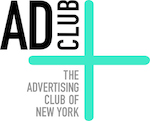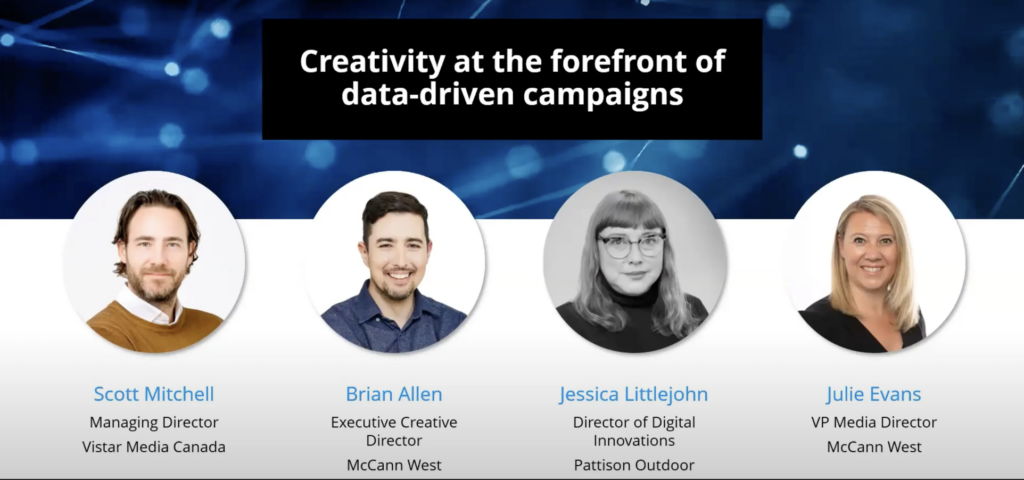Creativity at the Forefront of Data-Driven Campaigns: 3 Takeaways from IAB Canada’s Panel
As the world of digital out-of-home (DOOH) advertising continues to grow, the rise of ad tech in the space has driven tremendous advancements in the capabilities available to advertisers.
From programmatic buying and selling to in-depth measurement and data-driven dynamic creatives, we’re still only scratching the surface of DOOH’s true potential.
With that in mind, Scott Mitchell, Managing Director at Vistar Media Canada sat down with DOOH industry leaders to discuss some unique capabilities and best practices for this growing medium. Panelists included:
- Julie Evans, VP Media Director, McCann West
- Brian Allen, Executive Creative Director, McCann West
- Jessica Littlejohn, Director of Digital Innovations, Pattison Outdoor
Here are three key takeaways and some best practices from this informative webinar:
1. DOOH’s capabilities have evolved tremendously
“The opportunity that’s opened up is that we can start to look at out-of-home as a full-funnel medium to support the entire customer journey.” – Brian Allen
“Beyond just having the right message it really forces us in a good way to flex that creative muscle and think about who are we targeting, when are we targeting, why are we targeting and to blend that together — that’s I think really the exciting part of programmatic out of home!” – Julie Evans
“The idea of being able to hit your right audience and change your creative quickly really creates efficiency from a buying standpoint and an execution standpoint. It definitely makes things a lot easier while still working with the environments we have on the out-of-home side.” – Jessica Littlejohn
2. DOOH has unlocked new opportunities in the creative process
“Out-of-home does bright bold concise messaging well, but once you can start to layer in creative formats we see cross over between mediums makes it even easier to do cross-platform and targeting into spaces along the customer journey.” – Jessica Littlejohn
“Some of the best creative executions come from out-of-home especially when we think about it from a digital programmatic standpoint it’s just taking that step further and really trying to think of [OOH] in a fun way.” – Julie Evans
“The old rules of out-of-home still apply — keep it simple! But when you get into spaces like transit stations and office buildings you have a little more time with the audience. This is actually making things much more complex for creative because of the opportunity to send multiple messages to your audience as to where they are in their customer journey or physically.” – Brian Allen
3. Cross-collaboration is more critical than ever in OOH
“I think it goes back to the ideation — of asking the right questions of our clients but also of our media partners, and then sharing that with our creative partners as well so that we’re all on the same train together.” – Julie Evans
“When it comes to tying it all together, there’s the original messaging that’s the creative; and what I like about where the technology is going is that we can actually do the executions with ease to say ‘I’d like to have this specific conquest moment but also to have my brand message go out and have it contained within a singular platform that creates an overview of the entire buying process.’” — Jessica Littlejohn
“Some ideas work better in certain mediums. From Julie’s perspective, she may need a certain number of impressions or need to know how to reach a certain audience, and I need to figure out how creative fits into that. So it definitely has to be a collaborative process to get the best results.” – Brian Allen
Best Practices for Making the Most of DOOH
“From a creative standpoint still recognizing that it [OOH] is somewhat of a passive medium. While people enjoy out-of-home, it’s not something where they’re truly locked into, so it’s about making sure to grab that message and that it’s contextual but still managing the reach that is required to have that frequency to really work out-of-home to its paces.” – Jessica Littlejohn
“I think we just have to be really cautious that we don’t over promise like we did in the early days of digital. We can’t put up two different versions of creative in the market every single day and truly know how they work. We first need to think about what is this role [of OOH], what are we trying to do and then optimize.” – Julie Evans
“What happened before was more of a waterfall effect – where the idea would be the thing, and then media would come in and then everybody would freak out because it wouldn’t work. Now
what we strive to do is come up with ideas but include media in that in that part of the process.” – Brian Allen
Check out the full video to learn more: Watch Now

